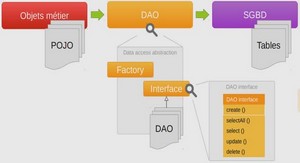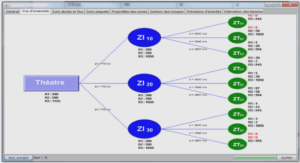Generally, for a VSC-HVDC system, there are three control modes: a) constant DC voltage control; b) constant DC current or active power; c) constant AC voltage control (Asplund, 2000; Flourentzou, Agelidis et Demetriades, 2009; Sood, 2004).
In mode a) and b), the reactive power sent to the AC system by the VSC is also controlled. Mode c) is usually used when the VSC-HVDC system feeds power to a passive network. Mode a) and b) are adopted for connecting an active AC network and mode c) is suitable for connecting a passive AC network (Flourentzou, Agelidis et Demetriades, 2009; Mauricio et Exposito, 2006).
Many literatures associated with the modeling and control of VSC-HVDC systems. To exploit the benefits of VSC-HVDC, many control strategies have been developed, such as PI control scheme (Yin, G. Y. Li et T. Y. Niu, 2005; Zheng et Zhou, 2006) in dq coordinates, direct current control strategy by regulating the amplitude and phase of the AC side currents, direct power control method (Rahmati, Abrishamifar et Abiri, 2006) using hysteresis with random switching frequency. Recently various nonlinear controllers have been investigated in (Liang et al., 2005), (Liu et Cai, 2008b), and (Rashed, El-Anwar et Youssef, 2008). In (Lindberg et Lindberg, 1995) and (Ouquelle, Dessaint et Casoria, 2009) an inner current control loop is designed for a digital control implementation and for a dead-beat control of the converter current when the converter is connected to a very strong AC network. An ancillary damping fuzzy control is proposed to change the active power reference dynamically and system stability is improved with the proposed ancillary damping fuzzy control in (Li et al., 2008). In (Du et al., 2007), the control strategy is to regulate the AC and DC voltages on the rectifier side and to control the AC voltage and frequency at the inverter side for improving the quality of power supply to industrial plants. An optimal control strategy based on Newton-Raphson OPF algorithm is proposed in (Pizano-Martinez et al., 2007).
Moreover, there are some further possibilities for the improvement control of VSC-HVDC system. In (Jowder et Ooi, 2004) the static synchronous series compensation (SSSC) is embedded in the VSC-HVDC station to improve the dynamic characteristics of the VSCHVDC link. In (Du, Sannino et Bollen, 2005), it has been investigated what happens when the VSC-HVDC is designed to supply an established AC system by using power flow and AC voltage control. The current limit, as also shown in (Du, Sannino et Bollen, 2005), (Du et al., 2007), and (Du, Agneholm et Olsson, 2008) which are aimed to protect the VSC-HVDC valves, has a significant impact on the dynamics of a VSC-HVDC supplied system. A control system for the VSC-HVDC during island operation and under three-phase balanced fault was investigated in (Du et Bollen, 2006), and it has been found that the current limit of the converters has a significant influence on the dynamic response of the system. Reference (Du, Agneholm et Olsson, 2008) presents three different frequency controllers and their effects on the voltage disturbance ride-through capability of a VSC-HVDC supplied industrial system.
As VSCs are modeled as ideal current sources on their DC sides, they are eminently suited for parallel connection across a pair of DC bus. The possible implementation of a multiterminal HVDC system and various aspects related to the multi-terminal HVDC system have been studied in (Li et al., 2007), (Ding et al., 2009), and (Lu et Ooi, 2002). In (Li et al., 2007) a linear decoupling control is studied and the multi-terminal VSC-HVDC is presented to interconnect wind farms to AC grids. This method highlights the control at the level of wind generator cluster that comprises several permanent magnet synchronous generators without the primary converters on themselves. Multi-terminal VSC-HVDC system is able to connect each doubly-fed induction generator located at different site respectively, and transmit electrical power into main grid (Ding et al., 2009). In (Lu et Ooi, 2002) it describes the optimal acquisition and aggregation of wind power by multi-terminal high voltage directV current based on Sine-wave Pulse Width Modulation (PWM), three-phase VSCs connected at their AC terminals to the wind turbine generators.
It should be mentioned that converters in a multi-terminal VSC-HVDC system can be either inverter or rectifier, depending on its power direction. Therefore, in order to maintain power balance in the DC grid, at least one VSC must be assigned to operate as a DC voltage regulator, which automatically functions as a power slack and ensures that the power balance requirement of the DC grid is satisfied (Egea-Alvarez et al., 2013).
INTRODUCTION |





